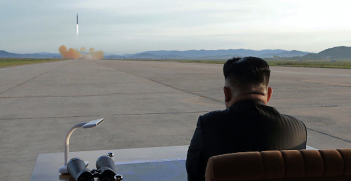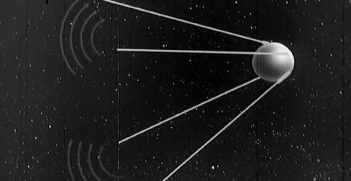Beijing's Space Jam

Without satellites, military operations are functioning in the blind. The Outer Space Treaty needs revisiting, and legal boundaries and norms must be established as states continue to build their space programs.
China has ambitions to become a global space power by the year 2030. The People’s Liberation Army (PLA) officially declared space a new designated military domain and has undergone reforms to develop a “peaceful use of space.” In contrast, Beijing views any kind of US interest in space as a means of absolute security and as a threat to the peaceful use of space. Similarly, China’s military space program and its space strategy are of great concern to the US. However, some would postulate that Beijing is leading improvements in its military space program in the pursuit of countering the US’s nuclear defence capability. Currently, it is difficult to gauge what can or cannot be construed as “weaponisation” or militarisation of space. The use of Anti-Satellite Tests (ASATS) is also becoming a highly contested issue because, upon impact, satellites are destroyed and produce space debris, a hazardous danger in earth’s orbit.
Current Legal and Normative Challenges on the Weaponisation of Space
Space exploration is governed by a series of international agreements such as the Outer Space Treaty (OST) of 1967, to which 105 countries are party. The OST acts as the constitution for space and “prohibits the placing in earth orbit of any objects carrying nuclear weapons or any kinds of weapons of mass destruction (WMD).” The term WMD is not clearly defined, though it is commonly understood as a chemical, biological, or nuclear weapons. However, the treaty clearly omits ballistic missiles. This is a deeply problematic issue as this has allowed state actors such as China to exploit loopholes in the treaty. For example, China was thought to have violated the treaty in 2007 when it blew up its own weather satellite, Fengyun-1C, but since it used a ground-based medium-range missile, it was not classified as a WMD. The missile was launched from the Xichang space facility and it hit the satellite with immense precision.
There are also currently no tangible international laws that regulate the weaponisation of space, nor are there international laws addressing the pressing matter of the creation of space debris. The exploded satellite went on to produce approximately 1,736 pieces of space debris, which will take approximately five years to descend down to the Earth’s atmosphere. The explosion produced approximately 35,000 shards that measure 1 cm in diameter and increased the amount of space junk in the orbit by 10 percent. Beijing claimed that the test was not to be construed as a threat and was not directed at the US.
This test shed light on the near irreversible damage that space debris can cause and how space pollution poses huge risks for overall human security. Satellites have levelled a great deal of accuracy and lethality to military strike capabilities, as well as to systems used by civilians such as GPS. Space as a security environment is critical to human security because on-the-ground military operations have become so reliant on satellite-based technology. However, the risk of accidental collisions between space debris and satellites is increasing.
More than 20,000 trackable pieces of space junk currently orbit our planet. Space debris is particularly problematic because of the high speed at which the debris travels through the orbit. Even the tiniest of pieces can be lethal for a satellite upon collision. According to the European Space Agency, “when an aluminium ball of just one centimetre in diameter strikes a satellite, it has the energy of a mid-range car driving into it at about fifty kilometres per hour.” The chances for these collisions to occur is currently quite small, but even a single compromised satellite could pose serious problems for earthbound programs reliant on satellite technology such as GPS or military intelligence operations.
China’s Space Military Strategy and Ambitions
China’s comprehensive objectives for its space program are very much aligned with its national interests and will give it the opportunity to gain more economic and political power, domestic legitimacy, and international prestige. Its ambitions for space power can be likened to nuclear power in the sense that space capabilities can be used for the purpose of deterrence. The primary difference between the two is that the threshold for the use of strategic space power is lower than the threshold for nuclear weapons. Chinese scholars have characterised space war or taikong zhang (太空站) as military confrontations occurring in outer space, incorporation of military defensive and offensive operations in outer space, and engagement with targets from space and from air space.
From the Chinese perspective, strategic space power has two uses: deterrence and real war fighting capabilities. Beijing’s primary motivations for developing a space strategy can be explained by its distaste for US hegemony and the US’s military presence around its periphery. The US stands to circumvent Beijing’s rise to power. Moreover, the role of space operations in the PLA’s asymmetric strategy is conducted primarily through enabling long-range precision strikes against land, air, and naval targets. Space is essentially the ultimate high ground. Beijing’s immediate geostrategic concerns are regarding deterring US influence on Taiwan and preventing Taiwan’s “secession.” More importantly, the Chinese analysis of the American military power is that it is enormously contingent on a sophisticated but exposed network of communications, command, control, surveillance, and computer intelligence, in and by way of space.
Realistically, China would not be able to counter the US in a traditional force-on-force engagement. If there is any way for defeating the American military power, it would be through targeting its Achille’s heel: reliance on space assets. China may be behind in terms of its space capabilities in comparison to the US, but it has both the financial resources and the political impetus for continuing to build its military space strategy and space deterrence. Eventually, Beijing may very well outpace the US in this new age of space competition.
The ambiguity of international laws has strong implications for the proliferation of dangerous space debris in a shared international space. Creating checks and balances in space requires a more comprehensive international governance framework. We need to rethink the current treaty and determine how we want to shape the future in space. China, as a rising power, is a threat to upholding peace and stability. Beijing’s strategic goals to weaponise space against the US should not go unchallenged. The implications of ASATs weigh heavily not only on the environment in space, but also on the security of communications and surveillance operations on Earth. Were China to roam freely and unchallenged in space, it could very easily deny access and use of space to its adversaries. Chinese thinkers believe that whoever controls space will own Earth. Perhaps they have reason to believe so.
Eiza Marot is a Franco-Thai graduate student at the Paris School of International Affairs, specializing in South East Asian and East Asian security. She completed her undergraduate studies in Melbourne, Australia, but has spent most of her life living abroad in the US and Malaysia. She is an aspiring policy analyst with ambitions of contributing to the literature on space as the next frontier of war, especially with regards to China as an increasingly prominent feature in Earth’s orbit.
This article is published under a Creative Commons License and may be republished with attribution.





